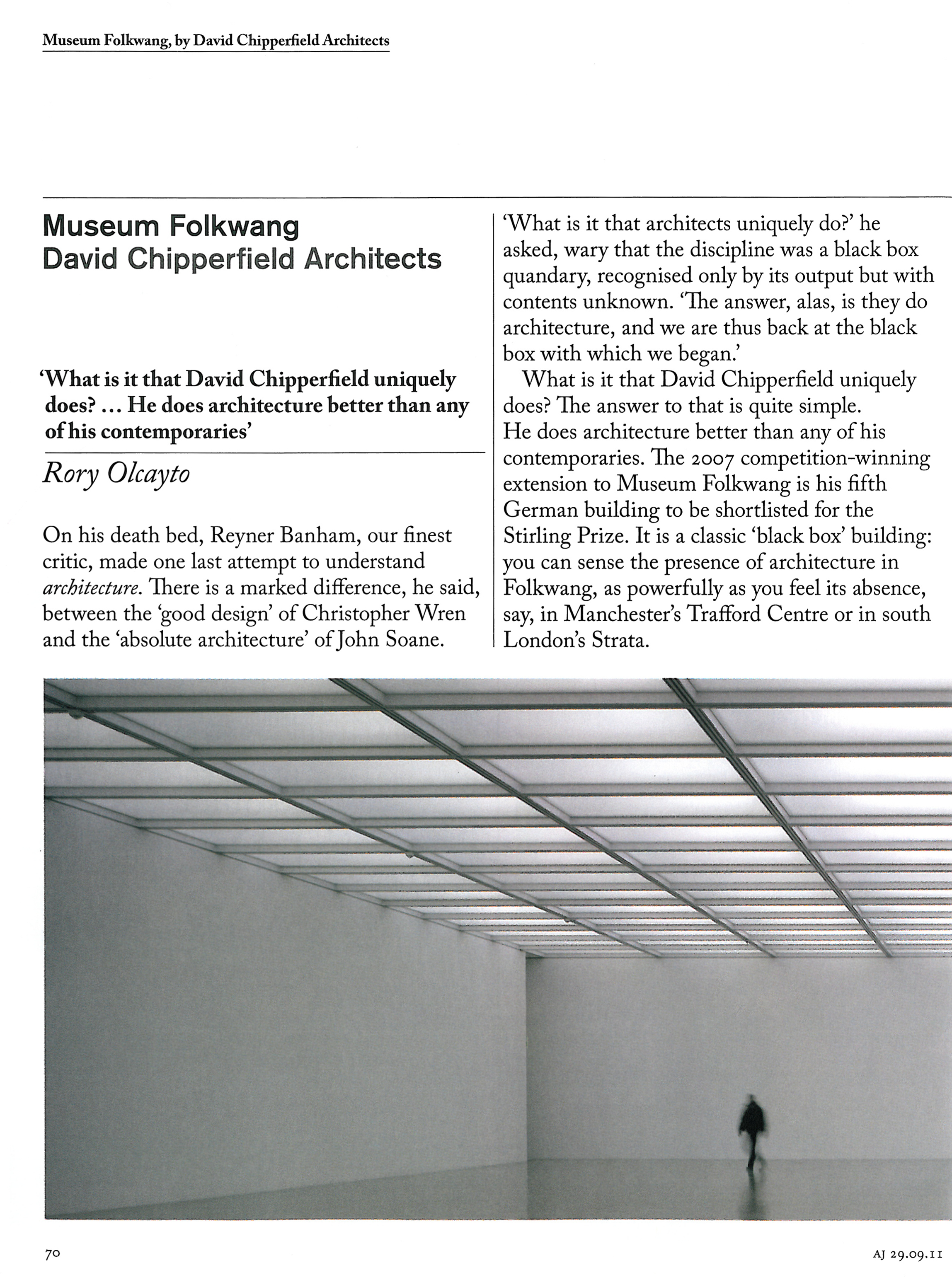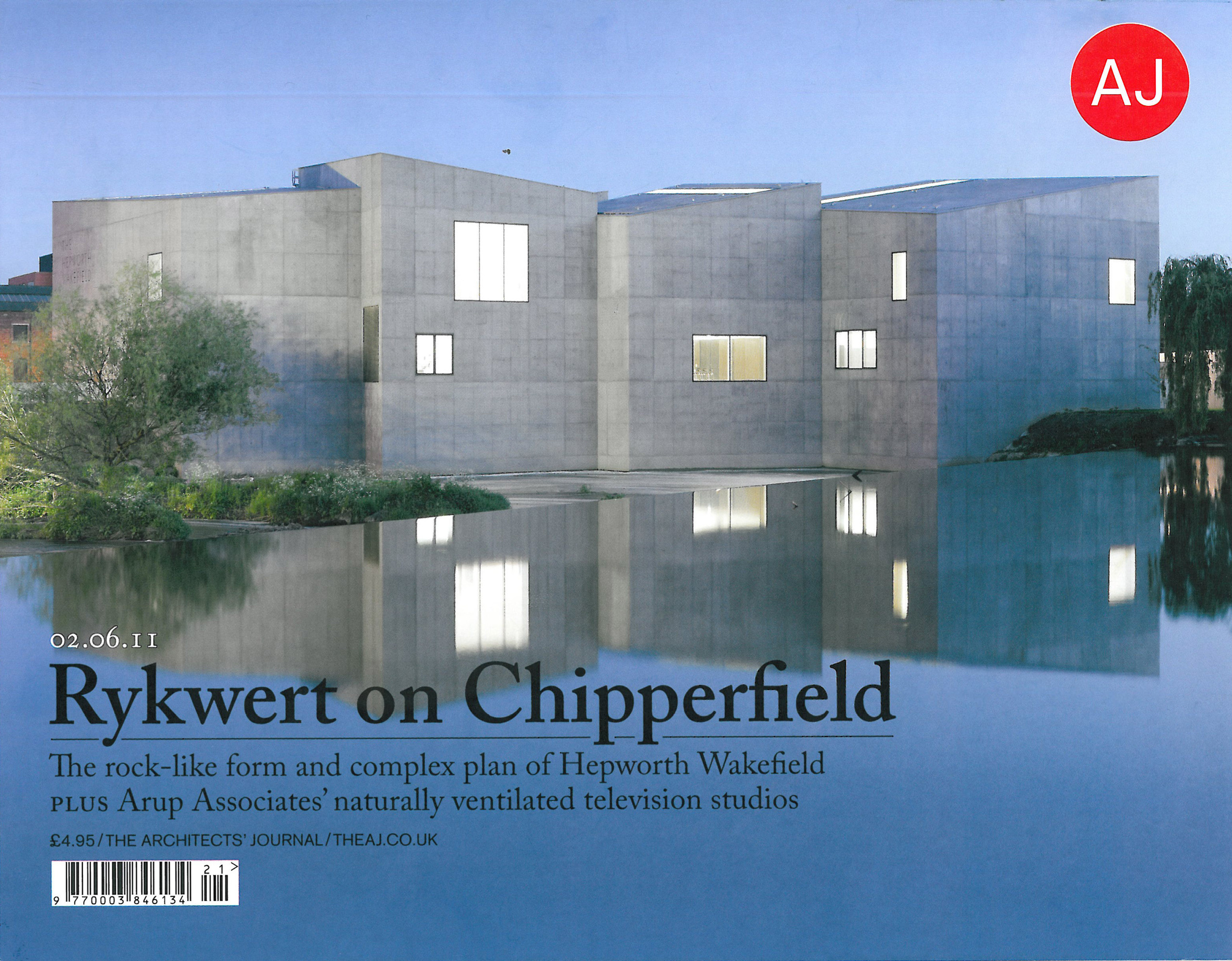‘David Chipperfield pays his respects at the twin altars of classicism and modernism with his Viennese department store, uniting both in a building that is at once of its context and apart from it.’
Derided by the secessionist Otto Wagner for its boorish eclecticism - despite the fact that he was to build his seminal post office directly on its eastern section - Vienna's historicist Ringstraße still defines the character of Austria's capital and lends its name to the eponymous style that arose from 30 years of concentrated urbanisation under visionary Habsburg emperor Franz Joseph. Walking through the blocks that connected the mediaeval city to its old suburbs, you see the classical patterns of architraves, friezes and rustication, which for the last century has been the schnitzel in Vienna's urban sandwich.
Kärntner Straße, the main shopping street linking the south side of the Ringstraße with the imposing Stephansdom Cathedral to the north, seems a bloody mess by comparison. Here, brassy turn of the century Beaux Arts and faux Rococo bang up against post -war modern with a riot of commercial signage. This visual clamour is elegantly summed up in Hans Hollein's 1989 Haas Haus on the corner of Stephansplatz, whose clashing geometries and mirrored oriels act as a pivot between the city's commercial, religious and tourist centre.
Maintaining that connection was also a priority for the Vienna city government when German luxury designer clothing retailer Peek and Cloppenburg was looking for a site for its third new store in the city. Since 2000, P&C has been commissioning stores designed by big-name architects, with Richard Meier in Dusseldorf, Gottfried B6hm in Berlin, and Renzo Piano in Cologne. For its 12,000m2 Vienna store, David Chipperfield beat Meier, Eduardo Souto de Moura and Rafael Moneo with what seems a textbook exercise in his trademark minimalism.
Of course the history of the department store is rooted in the consumption and mass-production that is a constituent part of modernism, and P&C originates from the land that within 30 years gave us the polarities of the typology - from Alfred Messel's 1896 reactionary neo-gothic Wertheim store in Berlin to Erich Mendelsohn's ground-breaking modernist Schocken stores from 1925.
To this historical background, Chipperfield has brought his own prepossessions and influences, creating a simple, thick grid of trabeated concrete overlaid with a white Danube bush hammered limestone, that belies the sophisticated contextualism that is in fact going on. In the crisp delineation of solid and void, he both distils the classical language of the Ringstraße and refers to Adolf Loos. And despite the resemblance, project architect for the scheme Jens Lorbeer claims it was only after the store was designed that the firm became aware of a 1911 cartoon lampooning Loos' shocking modernism and referring directly to the square-punched white wall of his 1912 Goldman and Salatsch building - which an outraged Emperor Franz Josef would have had to stare out at over the Michaelerplatz from the main gate of the Imperial Palace.
The design uses simple devices to create subtle hierarchies within the overarching white stone grid. P&C insisted on high levels of glazing so products could be seen in natural light - something that allowed the punched form. At ground level the display windows' frames are flush with the face of the stone, as are the cast aluminium entrance shutters, whose pattern is echoed on the atrium rooflight. By contrast, the entrance doors are set deep within their reveals, an alignment repeated on the four other retail floors. It's a simple gesture, but almost imperceptibly modulates the facade and suggests classical rustication.
On the north corner of the P&C site, a building that survived the wartime bombing of the centre is now framed on both sides by the store's stone grid. However, the massing does not overwhelm but almost incorporates it - its staircore of staggered windows on the north elevation, a proto-modernist gesture readily absorbed into the new façade. In a way, this intrusion on the uncompromising new form shouldn't work, but it's skilfully been made part of the overall composition. At the top of the building, the original design had proposed a fifth floor loggia for a rooftop bar, with views westwards and north towards the Stephansdom. Cost concerns mean this is instead merely recessed, housing the admin area.
With other demands made on maximising retail area, Chipperfield has had little room for manoeuvre on the store's retail interiors, so has concentrated on the atrium that runs up through the middle of the building. The white Danube limestone appears again, cladding its perimeter columns and slab edges. Escalators, plainly dressed in white metal panels, create a massing all their own as they rise to the fifth floor. Here, topping the atrium rooflight, is a cast aluminium mesh of concentric circles – a gauze to the sky above, and recalling the hall of Otto Wagner's Postsparkasse in its delicacy.
With limestone delineating the atrium area, floors elsewhere are in white oak parquet. Internal specification seems a little let down by the plasterboard ceilings shot blasted with downlights, that gives the sales area an unrelenting homogeneity. A teutonic rigour to the retail layouts makes the super-high-end designers' goods suffer under the same light, which seems somewhat counter-intuitive.
Of course, the idea of the 'big store' has been in constant development since the typology first appeared - not least in the latest fad by firms like FOA for densely patterned, ornamented facades, and commissions to architects like FAT and Jamie Fobert to style individual departments. In neither regard does the P&C store push these boundaries or reinvent the typology. In fact, its historicist references are closer to neo-rationalist Franco Albini's 1961 Rinascente in Rome, whose stone skin alluded to classical language, but cleverly reinterpreted it in an accomplished expressed services approach. Chipperfield's response here might not be a game changer in the same way, but its formal references are highly nuanced, responding both to Vienna's architectural past and its specific position in the city. The sophistication of Chipperfield's move is, in a sense, in making his building matter out of place. It is as if he has taken a Ringstraße palazzo and transposed it the 100m or so to the middle of the medieval Innere Stadt - one simple move from which all of its aesthetic impact is derived.
Jens Korbeer doesn't deny that the building has divided opinion in the city. 'People either love it or hate it: he says, adding 'Some think it looks fascist.’ But he thinks Loos could well have faced the same controversy with his Goldman and Salatsch building. In its other major formal influence, Chipperfield's store refers to Loos' role in defining modernism in a city struggling to hold on to its Imperial heritage. Ironically, this was lost forever with the assassination of the Emperor's nephew and heir-apparent Franz Ferdinand in Sarajevo, only two years after its completion, dragging Austria violently into the 20th century.
So the building's symbolism is both site specific and highly resonant. In sublimating the Imperial Ringstraße style with Viennese early modernism the architect has realised a truly postmodern design. But if the store's 'shock of the new' redux is considered a success, Chipperfield owes the portentous Loos a stiff drink in his American Bar.



